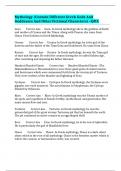Class notes
Lecture notes The Businesss Environment Cambridge Technicals Level 3 Business, ISBN: 9781471874796
- Course
- Institution
- Book
This document talks about why businesses plan, why they fail, sources of finance, their advantages, and disadvantages.
[Show more]













